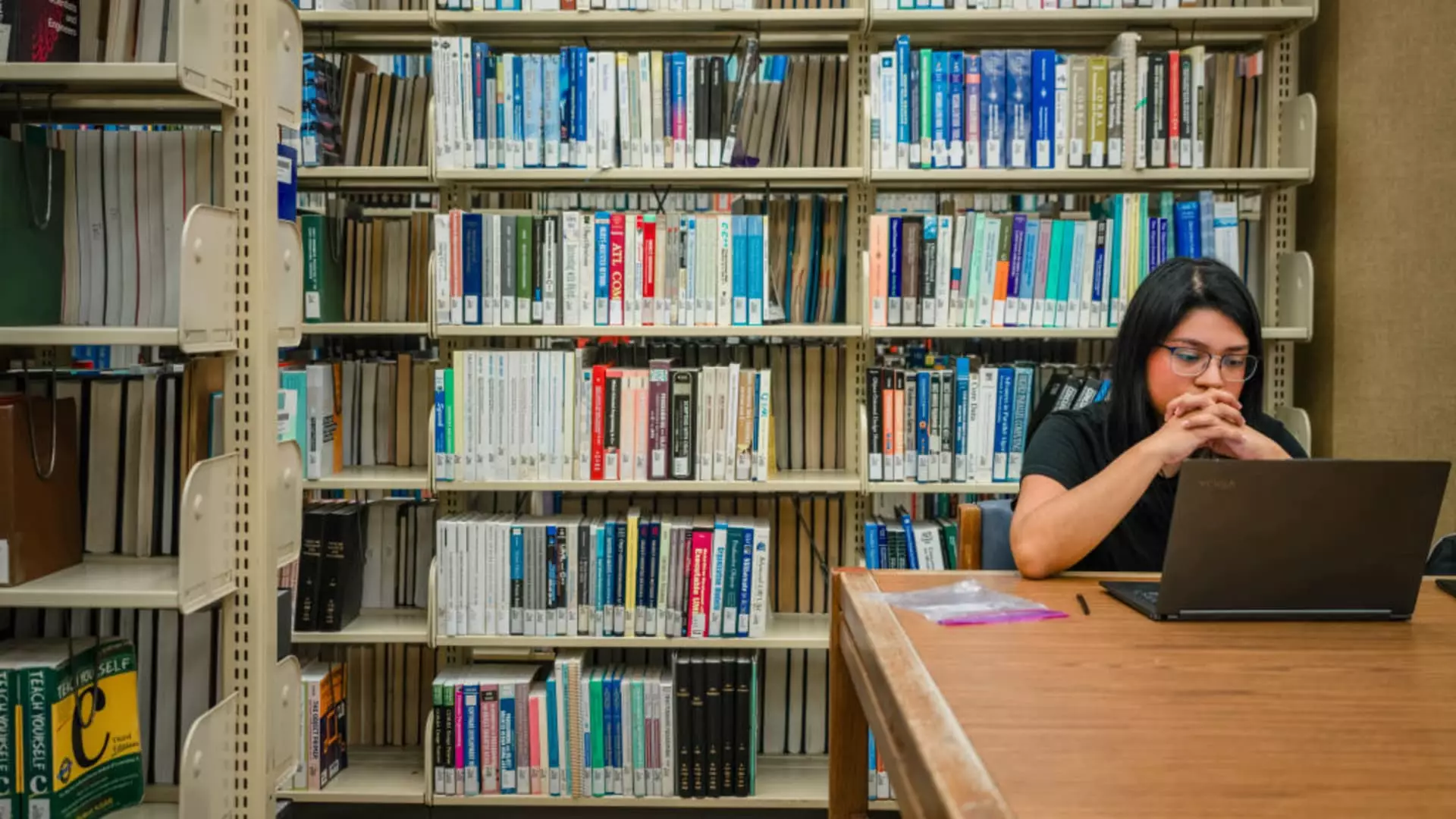In an era where the skyrocketing costs of higher education have long plagued students and families, the recent overhaul of federal student loans under President Trump’s legislation signals a significant pivot. Marketed as a move towards fiscal responsibility, the new caps intend to curb debt accumulation—an admirable goal in theory. However, beneath this veneer of prudence lurks the potential for profound unintended consequences that could fundamentally alter access to higher education, particularly for those from lower-income backgrounds. While the rhetoric champions financial discipline, the reality suggests a complex web of challenges that may backfire, restricting opportunity rather than safeguarding it.
This policy, painted as a “big, beautiful bill,” represents an explicit attempt to impose more controlled borrowing limits—limits that could rein in irresponsible spending but risk hamstringing the very students and professionals who most need federal aid. A carefully nuanced analysis reveals that these measures, while seemingly pragmatic, threaten to deepen inequality and compromise future workforce development. It’s a classic case of well-intentioned reform gone awry, where the desire to curb debt risks morphing into a barrier to upward mobility for those who need it most.
The Hidden Costs of Capping Borrowing: A Dangerous Tightening of the Academic Belt
Mandatory borrowing limits mark a turning point in federal student loan policy. Borrowers pursuing advanced degrees—already burdened with staggering costs—face new ceilings that could drastically alter their educational trajectories. For example, graduate students in fields like medicine, law, or dentistry—whose education costs typically surpass $200,000—may find their ambitions thwarted by these caps. With the removal of programs like Grad PLUS loans, students and families will be forced to turn elsewhere, often into the murky waters of private loans, which carry less favorable terms and fewer protections.
The impact on students aiming for professional degrees is especially troubling. These are the individuals who serve as the backbone of a healthy society, yet their paths may be obstructed simply because federal funding no longer suffices. Is it truly responsible policy to limit access to careers crucial to the public good? While the government seeks to rein in excessive borrowing, the broader societal scars of a workforce too constrained to pursue vital, yet costly, professions could outweigh any fiscal benefits.
Moreover, these restrictions could inadvertently reinforce the cycle of inequality. Private lenders tend to favor higher-income borrowers with better credit histories, leaving lower-income students—who often rely on federal loans as their only viable option—more vulnerable to financial exclusion. As private loans become the fallback, an already marginalized demographic risks further marginalization, facing higher interest rates and less leniency in repayment.
The Broader Implications: From Potential Reform to Detrimental Restriction
Advocates claim that these limits could serve as a natural brake on the relentless rise of tuition costs. Indeed, by constraining borrowing, colleges and universities might be pressured to reevaluate tuition pricing or increase aid. However, the evidence suggests that institutions tend to respond primarily to market forces rather than policy caps. Instead, high-priced elite schools and specialized programs may merely adapt by offering scholarships or shifting costs elsewhere—to the student body or the government indirectly—rather than genuinely reducing tuition.
The shift toward private borrowing introduces new vulnerabilities. In a landscape where nearly 90% of student loans are federal, a mere 10% are private, yet this sliver could grow as federal caps tighten. Private loans lack the safety nets inherent in federal programs—such as income-driven repayment or loan forgiveness—making students more susceptible to financial hardship post-graduation. This strategy risks shifting the debt burden from federal coffers to private lenders and, ultimately, to students themselves, especially those with limited credit histories or financial stability.
One cannot overlook the broader economic and societal implications. Restricting access might slow the pace of professional workforce development in key fields like healthcare and law—sectors already grappling with shortages. The policy, inadvertently or otherwise, could deepen these crises, exacerbating social inequities and hampering societal progress.
A Center-Left Perspective: Balancing Fiscal Responsibility with Social Equity
From a centrist, liberal perspective committed to expanding opportunity without sacrificing fiscal prudence, these new measures reveal a problematic and shortsighted approach. While reducing reckless borrowing and controlling federal expenditures sound appealing, they cannot come at the expense of a fair and equitable system of higher education. Education is a social good—an investment in both individual potential and societal well-being—that should not be dictated solely by fiscal constraints.
There are more nuanced, sustainable ways to address the rising costs of higher education—such as increasing federal investment in public universities, enhancing need-based aid, or implementing income-share agreements that align repayment with earnings. Blanket borrowing caps, while appealing to fiscal conservatives, threaten to diminish the accessibility and diversity of our educational landscape. The central challenge remains: how do we ensure responsible lending while preserving the hope of upward mobility for future generations?
It is irresponsible to assume that simply limiting borrowing will solve the underlying issues of cost inflation or student debt. Instead, this approach risks creating a dichotomy where only the privileged can afford certain degrees, leaving behind the most vulnerable yet crucial members of society. A balance must be struck—one that enforces fiscal accountability without turning higher education into a privilege reserved for the already privileged.
The true measure of this policy’s worth will depend on whether it prompts genuine reforms—like transparency in tuition pricing and increased institutional accountability—or merely shifts the burden of rising costs onto vulnerable students. As it stands, the proposed limits threaten to do neither effectively. Instead, they risk fostering a more divided, less equitable higher education system—one where opportunity hinges more than ever on personal wealth or access to alternative, often more costly, financing options.

